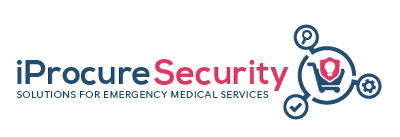
Mutilingual EMS Glossary Effort in iProcureSecurity Project
There is a growing understanding of the central role played by communication in the delivery of efficient and effective health care, particularly in high-stress settings such as medical emergencies. Many studies have attempted to draw a detailed picture of the critical importance of communication in providing safe and patient-centred care, and a detailed analysis of how communication occurs and sometimes fails. One of the main causes identified in the literature addressing critical incidents, that is, the adverse events that lead to avoidable harm to the patient is a communication failure. Because the job of the EMS practitioners is complex, high-stress, unpredictable, and dynamic, these healthcare settings pose particular challenges to maintaining effective communication.
To give just two examples, communication disruption was the leading cause of US malpractice complaints reported to the Joint Commission in the United States of America between 1995 and 2006. According to another study covering 25,000 to 30,000 Preventable adverse events leading to permanent disability in Australia, 11% were due to communication problems, in contrast to 6% due to inadequate skill levels of professionals.
The WHO has dedicated a report with recommendations on the problems that occur in handover within and between emergencies and hospitals. Handover communication refers to the process of transmitting patient-specific information from one caregiver to another, from one team of caregivers to the next, or from caregivers to the patient and family in order to ensure continuity and safety of care of the patient. Handover communication also refers to the transfer of information from one type of health care organization to another, or from the health care organization to the patient’s home. Shared information generally consists of the patient’s current condition, recent changes in the condition, ongoing treatment, and possible changes or complications that may occur. Patient care handovers occur in many settings throughout the continuum of care, including an admission from primary care, nursing shift change reports, nursing report on patient transfer between units or facilities, anaesthesiology reports resuscitation room staff, emergency department communication with staff at a receiving facility during the transfer of a patient, and discharge of the patient back home or to another facility.
In part, handover problems stem from the way healthcare providers are trained in teamwork and communication skills. The lack of good role models and the fact that the healthcare system in practice does not promote or reward the autonomy and performance of each professional also influences them. Another root cause may be that the practice and understanding of healthcare have historically not placed a true meaningful emphasis on involving patients and their families in the provision of care. It is known from many scientific studies that although the specialization of health professionals can improve medical treatment, the specialization of care also means that more people and units are involved in patient care, which is a huge increase in complexity and complication in matters related to communication. Another problem that contributes to miscommunication is that staff composition may not reflect the demographics of the community being served. Finally, the problems of translation between different languages derived from the increasingly frequent collaboration between teams and institutions in different countries and the increasing dependence on health professionals from other countries are found to also cause communication difficulties.
The World Health Organization includes among its recommendations that the potential barrier posed by the difficulty of communication between professionals with different mother tongues be taken into account, together with cultural and language differences among patient population and EMS workforce. Although their report “Communication during Patient Hand-Overs” does not explicitly mention the specific case of emergency teams from different countries that have to work together in the same disaster area, we agree on the importance in these cases of working on communication problems due to lack of attention in the translation of medical and technical terms.
The iProcureSecurity project is a Coordination and Support Action (CSA) funded by the European Commission within the H2020 framework under Grant Agreement No 833291. Its consortium consists of organizations from Spain, Austria, Belgium, Turkey, Italy, Greece and Ireland representing a balanced combination of capabilities with regards to research on medical emergency, experiences from field operations, expertise in procurement and assessment of societal aspects. Since we began working together on the analysis of the challenges and needs faced by the EMS practitioners in Europe, we realized that although we communicate in English, we have to continuously translate and unify the EMS terminology used in the project reporting. On the other hand, if our objective was to enhance the possibility for the emergency medical teams in Europe to work together, we had to facilitate the communication and coordination not only by technical means but also by correctly translating the terms and concepts used by the EMS organizations in each of the consortium languages (in total seven). Therefore, we decided to add a new objective that was not in the original project proposal, which is to contribute to building a common EMS terminology used by the emergency medical teams in Europe.
Already in the early stages of studying the entire EMS ecosystem by reviewing the scientific literature, receiving and translating contributions in the EMS Network (www.iprocuresecurity.eu/ems-network/) as well analysing responses to surveys and interviews, we realized that even in English there is a great dispersion in a way the actors, actions and objects related to the management of medical emergencies in Europe are named. Therefore, we decided to develop and establish an initial common terminology in English together with the definitions of each term that we published on the iProcureSecurity project platform (www.iprocuresecurity.eu/knowledge/glossary). Based on this initial terminology, the Spanish, German, French, Italian, Greek and Turkish native speakers in our consortium prepared the translations of each concept as well as the corresponding definitions in their countries.
The process of developing multilingual terminology for Emergency Medical Services in Europe is by no means finished. The current outcome of our work has been published on the iProcureSecurity project platform to raise visibility and promote the participation of all stakeholders in the EMS field willing to facilitate the unification of the communication and knowledge exchange between the emergency medical teams.
That is why we encourage everyone who wishes to contribute to the translation, definition and discussions about EMS concepts and terminology to join our EMS Network and share further insights and experiences.
References
Tate RC. The Need for More Prehospital Research on Language Barriers: A Narrative Review. The Western Journal of Emergency Medicine. 2015 Dec;16(7):1094-1105. DOI: 10.5811/westjem.2015.8.27621.
Slade, D., Manidis, M., McGregor, J., Scheeres, H., Chandler, E., Stein-Parbury, J., Dunston, R., Herke, M., Matthiessen, C.M., Communicating in Hospital Emergency Departments, Springer, 2015
World Health Organization, Communication during Patient Hand-Overs, Patient Safety Solutions, vol 1, solution 3, May 2007. https://www.who.int/patientsafety/solutions/patientsafety/PS-Solution3.pdf
Root causes of sentinel events, all categories. Oakbrook, IL: Joint Commission, 2006 (http://www.jointcommission.org/NR/rdonlyres/FA465646-5F5F-4543-AC8F-E8AF6571E372/0/root_cause_se.jpg).
Andrews C, Millar S. Don’t fumble the handoff. MAG Mutual Healthcare Risk Manager, 2005, 11(28):1–2. http://www.magmutual.com/mmic/articles/2005_11_28.pdf.
Zinn C. 14,000 preventable deaths in Australia. BMJ, 1995, 310:1487. 2006 National Patient Safety Goal FAQs. Oakbrook Terrace, IL: Joint Commission, 2006 (http://www.jointcommission.org/NR/rdonlyres/25E48E23-6946-43E4-916C-65E116960FD5/0/06_npsg_faq2.pdf).
Clinical handover and patient safety literature review report. Australian Council for Safety and Quality in Health Care, March 2005 (http://www.safetyandquality.org/clinhovrlitrev.pdf).
Safe handover: safe patients—guidance on clinical handover for clinicians and managers. Hospital at Night Risk Assessment Guide. London, National Patient Safety Agency, 2004 (http://www.npsa.nhs.uk/site/media/documents/1037_Handover.pdf).
Solet DJ et al. Lost in translation: challenges and opportunities during physician-to-physician communication during patient handoffs. Academic Medicine, 205, 80:1094–1099.
WHO Collaborating Centre International Steering Committee, 11–12 June 2006 meeting.
National Standards for Culturally and Linguistically Appropriate Services in Health Care. Washington, DC: United States Department of Health and Human Services, Office of Minority Health, March 2001 (http://www.omhrc.gov/assets/pdf/checked/finalreport.pdf).
Some Links to Medical Terminology in English
Emergency & Trauma Glossary of Terms https://www.hackensackumc.org/wellness/emergency-trauma-glossary-terms/
Emergency Room Glossary http://www.shoestring-graphics.com/CP2020/medtech/glossary/er.htm
The A to Z of NHS health services terminology in the UK https://www.netdoctor.co.uk/health-services/nhs/a4491/a-to-z-of-terminology/
Kingston Health Sciences Center Glossary https://kingstonhsc.ca/patients-families-and-visitors/glossary-terms
Basic EMS Medical Abbreviations and Acronyms https://abbreviations.yourdictionary.com/articles/basic-ems-medical-abbreviations-and-acronyms.html
“Medicalese” Glossary https://www.ecfmg.org/echo/medical-medicalese.html
Keywords
Terminology, Multilingual Glossary, EMS Communication Problems

